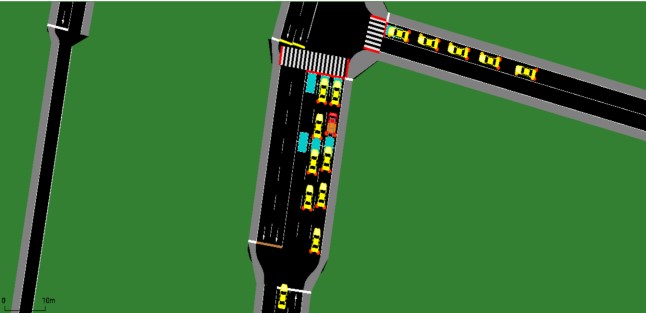Project Details
Assist Emergency Vehicles on Intersections Using Reinforcement Learning
Emergency vehicles, like fire trucks and ambulances, play a critical role in responding to crises, where every second matters. In urban environments, navigating intersections is one of the most time-consuming and risky parts of their journey due to unpredictable traffic conditions.
This project explores AI-powered traffic control that prioritizes emergency vehicles using Reinforcement Learning (RL) and microscopic traffic simulation via SUMO (Simulation of Urban Mobility). The goal is to create smart intersections that allow emergency vehicles to move quickly, safely, and efficiently, while still minimizing disruption to regular traffic.
Project Highlights:
- Built a real-time AI-based traffic signal controller using reinforcement learning
- Integrated SUMO simulation with Python backend and live WebSocket data streaming
- Visualized emergency vehicle movement and signal states through a browser-based GUI
- Improved emergency response times by 50–60% with minimal impact on regular traffic
- Designed a scalable and modular architecture for future smart city integration
Key Challenges Addressed:
- Ensuring emergency vehicle prioritization at intersections
- Minimizing risks of sudden reactions by other road users
- Reducing traffic delays for both emergency and regular vehicles
Solution Overview:
- Developed a reinforcement learning-based traffic light controller that adapts in real time
- Integrated SUMO for realistic microscopic traffic simulation
- Used TraCI API to control signal states and retrieve live vehicle data
- Designed a custom OpenAI Gym-compatible environment with observation, action, and reward logic
- Delivered browser-based visualization and live performance metrics via WebSocket streaming
- Integrated a WebSocket-based data pipeline for real-time vehicle state updates and signal control commands.
- Designed an adaptive policy that prioritizes emergency vehicles based on live sensor data and simulation feedback.
- Developed a browser-based dashboard for real-time visualization and control interaction.
Technologies & Tools:
- Frontend: HTML, CSS, JavaScript (Canvas/WebGL for simulation view)
- Backend: Node.js, Express.js, WebSocket, Python (RL models, SUMO integration)
- Machine Learning: TensorFlow, Keras, OpenAI Gym
- Simulation: SUMO (microscopic traffic simulation), SUMO-GUI, TraCI
- Database & Caching: PostgreSQL, Redis
- DevOps: Docker, GitHub Actions
- Cloud & Training: AWS EC2, Docker (for training & remote simulation)
Key Features:
- AI-Based Signal Controller: RL-based traffic light system that adapts in real time
- Emergency Vehicle Detection: Identifies and prioritizes emergency units dynamically
- Simulation-Driven Learning: Trained in a SUMO environment for real-world scalability
- Performance Metrics Panel: Visual dashboard showing wait times, rewards, episode history
- Modular Design: Easily expandable to include new intersections, traffic policies, or V2X data
- Cross-Platform GUI: Runs in any modern browser with no special install required
